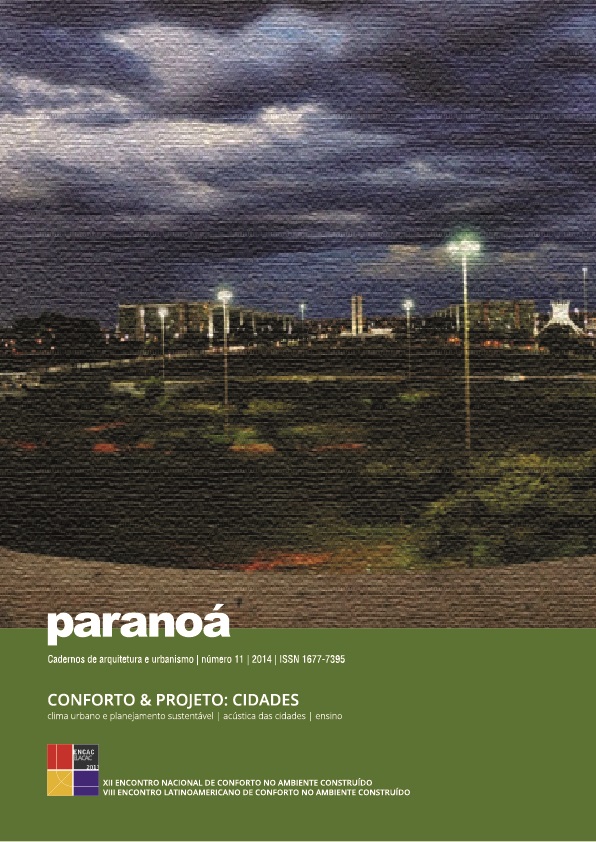Método de ensino para projetos de urbanismo mais sustentáveis: resultados da integração horizontal das disciplinas de projeto de urbanismo, paisagismo, infraestrutura e conforto térmico da FAU-UnB
DOI:
https://doi.org/10.18830/issn.1679-0944.n11.2014.12089Keywords:
Teaching of architecture and urbanism, Sustainable urbanism planning, Infrastructure, Landscape planningAbstract
The teaching of architecture and urbanism is characterized by its interface with various subjects from the understanding of space and city phenomena. The urban science requires studies that minimize environmental impacts and at the same time must attend social expectations. In this context, a good urban project should incorporate environmental elements in the design process, for example, the interface soil-vegetation- atmosphere, fundamental to energy balance and water flow volumes in drainage basin as well as for application of strategies related to the local microclimate. The article argues that the disciplines of urban planning inside the universities should adopt methodologies of design process that enable the integration of knowledge with horizontal disciplines that could be applied in the projects developed in the ateliers. This paper aims to demonstrate some results of the methodology applied to urban projects developed by 4th semester students at UnB School of Architecture and Urbanism, with the transversal integration of the following disciplines: Urban Planning 1, Thermal Comfort, Infrastructure and Landscape Design 1. The study case was a low income community in the expansion of a satellite city called Paranoa in Federal District, Brasilia, Brazil. The methodology applied in the planning process is known as Morphologic Dimensions of Urbanization Process (DIMPU) that include bioclimatic, economic, functional, sociological, topoceptive and expressive-symbolic aspects, parallel to the Principles of Environmental Sustainability (Andrade, 2008) and the principles of ecological management of the water cycle in urban areas.The three projects that have achieved best performances attempted to balance questions of density by using drawings and green and bioclimatic infrastructure techniques.
Downloads
Downloads
Published
How to Cite
Issue
Section
License
Autores que publicam nesta revista concordam com os seguintes termos:
- Autores mantém os direitos autorais e concedem à revista o direito de primeira publicação, com o trabalho simultaneamente licenciado sob a Licença Creative Commons Attribution que permite o compartilhamento do trabalho com reconhecimento da autoria e publicação inicial nesta revista. http://creativecommons.org/licenses/by/4.0
- Autores têm autorização para assumir contratos adicionais separadamente, para distribuição não-exclusiva da versão do trabalho publicada nesta revista (ex.: publicar em repositório institucional ou como capítulo de livro), com reconhecimento de autoria e publicação inicial nesta revista.
- Autores têm permissão e são estimulados a publicar e distribuir seu trabalho online (ex.: em repositórios institucionais ou na sua página pessoal) a qualquer ponto antes ou durante o processo editorial, já que isso pode gerar alterações produtivas, bem como aumentar o impacto e a citação do trabalho publicado (Veja O Efeito do Acesso Livre).















